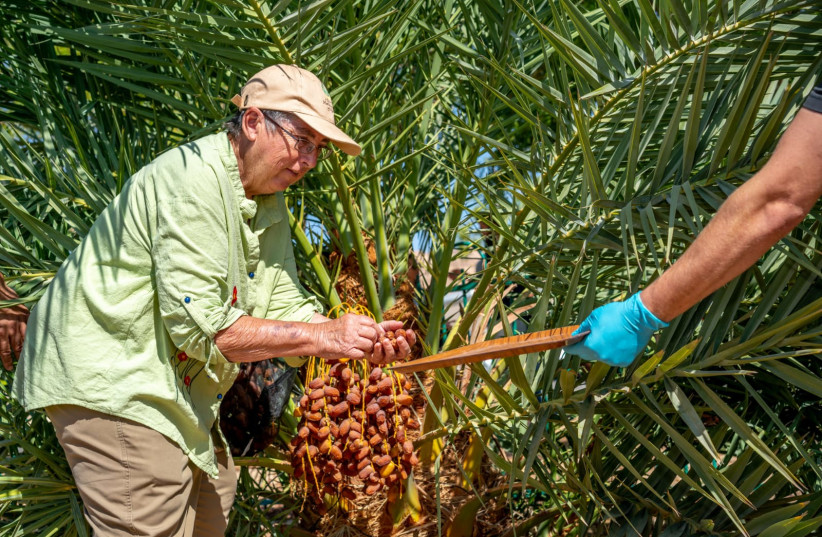Researchers recently harvested the second crop of dates grown on palm trees from 2,000-year-old seeds retrieved from archaeological excavations in the region, the Arava Institute for Environmental Studies in Kibbutz Ketura said Monday.
After one of the trees bore fruit for the first time last September, this year’s harvest has increased. Some of the dates will be available for visitors to buy and taste a staple of the ancient Judeans’ diet.
The special fruits resemble modern species of dates and have a very sweet taste, similar to honey, according to people who have tasted them.
The ancient palm grove at Ketura has a few trees. The most senior, which researchers have named Methuselah – the oldest man who ever lived, according to the Bible – was planted in 2005 from a seed found in Masada in the 1960s during excavations led by legendary Israeli archaeologist Yigal Yadin.
Over the following years, the researchers decided to replicate the experiment, planting another 32 seeds from various excavations. About six of them eventually germinated, mostly from Masada or Qumran, another iconic site, where the world renowned Dead Sea Scrolls were unearthed.
While Methuselah was found to be a male tree, some of the new palms turned out to be female, allowing pollination.
“It’s very exciting to taste the dates and see such a large and significant amount of fruit because we had no guarantees that we would get a fruit-bearing female tree,” said Dr. Elaine Solowey, director of the Arava Institute’s Center for Sustainable Agriculture, who leads the project together with Dr. Sarah Sallon, director of the Louis L. Borick Natural Medicine Research Center of Hadassah-University Medical Center.
“It looks like a miracle on several levels,” she said. “Seeds from archaeological digs sprouted successfully, and against all odds, female trees sprouted among them. We are excited to revive an ancient variety of dates.”

